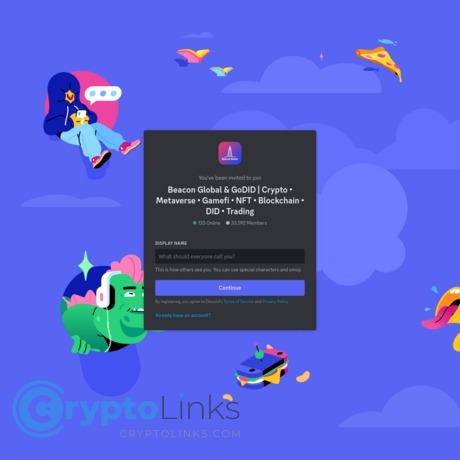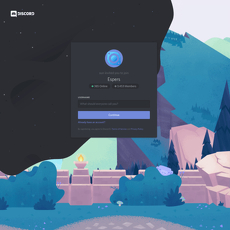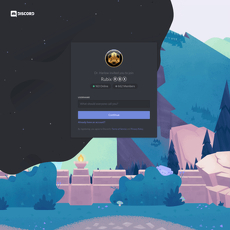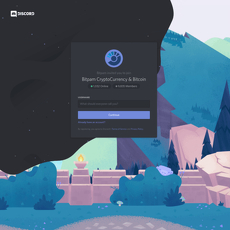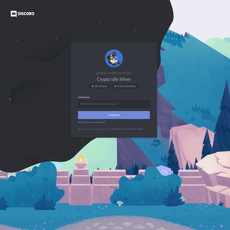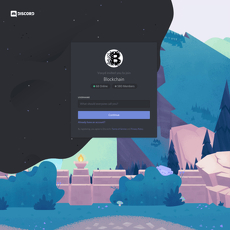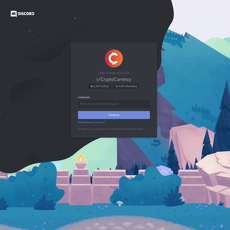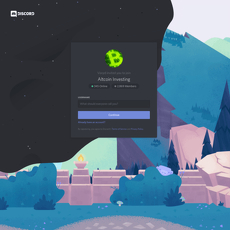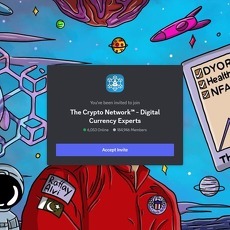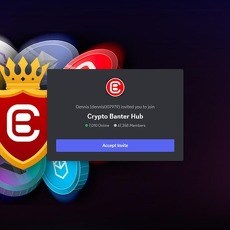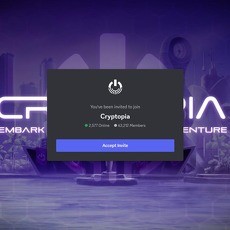Beacon Global & GoDID | Crypto . Metaverse . Gamefi . NFT . Blockchain . DID . Trading Review
Beacon Global & GoDID | Crypto . Metaverse . Gamefi . NFT . Blockchain . DID . Trading
discordapp.com
Beacon Global & GoDID Discord Review Guide: Crypto, Metaverse, GameFi, NFTs, DID, and Trading — Everything You Need to Know + FAQ
Is the Beacon Global & GoDID Discord actually worth your time—or just another noisy crypto server that spams your notifications and teaches you nothing?
I asked the same question before jumping in. So I joined, clicked around, tested the channels, poked the bots, checked the moderation, and looked for actual value. If you want a focused Web3 hub that covers crypto, metaverse, GameFi, NFTs, trading, and decentralized identity (DID) without wasting your day, this review is for you.
You can check out the server here: https://discord.gg/beacon-global-godid-crypto-metaverse-gamefi-nft-941215444059164692.
The common headaches with crypto Discords
Let’s be honest: most crypto Discords feel like a casino lobby at peak hour.
- Spam and fake airdrops everywhere. You join for “alpha” and end up dodging DMs about mystery mints and “urgent collabs.” The FTC has warned repeatedly about social media investment scams, and Chainalysis reports show that billions are siphoned from users each year through social engineering and phishing—Discord remains a common attack vector. Sources: FTC, Chainalysis.
- Verification hell. Captcha → quiz → wallet sign-in → mysterious “please boost” request → still no access. You shouldn’t need a PhD in bot navigation just to say hello.
- Signal-to-noise is awful. Ten channels of memes, one of actual insights. “Alpha” is often just recycled headlines or shilled links.
- Webhook exploits and link bait. We’ve all seen servers where a compromised bot posts a “limited mint” that drains wallets. One bad click can ruin a month of wins.
- Unclear roles and perks. You grind for XP, and the big reveal is… a colored name. Cool. Now what?
- Time sink. Endless pings, no roadmap, no curation. You leave more confused than when you came in.
That’s the baseline I expect when I review a crypto server. So when I heard Beacon Global & GoDID leans into DID and tries to bring structure to a multi-topic Web3 community, I wanted to see if it actually cuts through the chaos.
What I promise to solve in this guide
I keep this review practical and to the point. Here’s what you’ll get:
- What this server actually is and who it’s for. Not everyone needs another crypto Discord. I’ll help you decide quickly.
- How to join safely and set up your first 24 hours. Clear steps to avoid spam, star the right channels, and get value fast.
- What matters inside vs. what’s just noise. Events, tools, DID features, partner perks, and the stuff that actually moves the needle.
- How the DID angle fits. What decentralized identity can unlock—roles, access, rep—and what to watch out for on the privacy side.
- Who should skip it. If it’s not aligned with your goals, I’ll say so, no hard feelings.
If you’re new to DID or the idea of identity-bound access in Web3, don’t worry—I’ll keep the jargon out and the actions clear.
How I tested and what you’ll learn
I treat Discords like products. Here’s the framework I used while checking Beacon Global & GoDID:
- Onboarding: Is verification straightforward? Are the rules clear? Any pressure to connect a wallet or share extra data?
- Channel map and structure: Are topics separated cleanly (crypto, metaverse, GameFi, NFTs, trading, DID)? Are announcements and events easy to find?
- Moderation quality: Are mods responsive? Is spam removed quickly? Are DM scams addressed?
- Signal-to-noise ratio: Do you get real insights, or is it just hype? Are there curated updates, not just retweets?
- Events and AMAs: Frequency, quality, replay access, and whether they bring in legit partners or builders.
- Tools and bots: Useful alerts, DID/role integrations, research helpers, or just vanity features?
- DID features: How identity is used for roles, access, or reputation—what’s optional, what’s required, and what’s explained clearly.
- Security and safety: Anti-phishing rules, link hygiene, webhook protections, and reporting channels.
- Value by persona: Does it help beginners learn fast? Can traders get practical discussions? Can builders and creators find collabs or users?
- Comparative feel: How it stacks up against other multi-topic hubs, including servers anchored by quests, WL hunting, or alpha groups.
Quick verdict snapshot: If you’re curious about DID’s practical use in Web3 communities—and you want one server where crypto, NFTs, GameFi, and trading are organized rather than chaotic—this is worth a look. Expect a structured start, active guidance, and a DID-first mindset that aims to unlock perks through verifiable roles instead of endless XP grind. If you only want high-frequency trading signals, this won’t replace your niche trading groups.
What to do first if you join:
- Open the invite: Beacon Global & GoDID Discord.
- Read the rules and secure your account settings (disable DMs from server members, enable 2FA).
- Complete verification carefully; never click links sent in DMs.
- Star the key channels (announcements, events, beginner resources, DID/how-to, support).
- Claim starter roles so you only get pings you care about (crypto, NFTs, GameFi, DID, trading).
- Set notifications to “Mentions only,” then subscribe to event/calendar posts.
- Ask one specific question in the right channel—this triggers recommendations and faster replies.
Now, here’s the part most people miss: why is everyone talking about Beacon Global & GoDID in the first place, and what makes its DID focus different from typical Discords? That’s exactly what I’ll unpack next—starting with what the project is, how the community is set up, and why DID might be your not-so-secret unlock for roles, access, and reputation. Ready to check that out?
What is Beacon Global & GoDID, and why is everyone talking about it?
Beacon Global & GoDID is a multi-topic Web3 hub that actually treats your time like it matters. It bundles crypto, metaverse, GameFi, NFTs, and trading into one server—but the twist is a real focus on decentralized identity (DID) through the GoDID framework. That DID angle isn’t fluff. It’s about portable reputation and smarter access across apps, communities, and events.
Think of DID as an identity you control—no email middleman, no platform custody. It’s built on open standards like the W3C DID Core, and it opens the door to reputation that follows you: contributions, verifications, and attestations that can unlock roles, WL spots, tournaments, or gated alpha. It’s a shift from “prove it every time” to “prove it once, use it everywhere.”
That matters in crypto. Reputation is the difference between getting buried in noise and getting signal when it counts. Research and commentary around on-chain reputation (for example, the widely shared Decentralized Society paper) suggest that proof-of-participation and attestations can reduce spammy behavior and improve trust in open networks.
“In a market where everyone is anon, reputation is the new alpha.”
Inside the server, DID isn’t some abstract banner—it shows up as roles, perks, event eligibility, and cleaner paths to collaborate across projects. Come for the WLs or market talk, stay because your contributions finally count for something.
The core pillars: Crypto, Metaverse, GameFi, NFT, DID, Trading
Here’s how each pillar shows up in practical, everyday ways:
- Crypto — Market wrap threads, news digests, and explainers that don’t assume you’ve read three whitepapers before breakfast. Expect curated links, partner announcements, and timely discussions when something breaks.
- Metaverse — World previews, event calls, and collab open doors. If you’re scouting virtual land, creative gigs, or brand activations, you’ll find discovery channels and partner highlights to shortcut research time.
- GameFi — Tournaments, leaderboards, and chatter around upcoming seasons or tokenomics updates. If there’s a fair whitelist or in-game reward opportunity, it’s typically flagged early with rules and timelines.
- NFT — WL raffles, partner collabs, and mint calendars. The value here is curation and reputation: why a drop matters, who is behind it, and how to get in without playing 600 Discord hopscotch games.
- DID (GoDID) — Roles that reflect verifiable participation, guides to set up identity safely, and pointers to standards and tools (e.g., W3C DIDs, attestations). DID-backed roles can unlock perks with less friction and more fairness.
- Trading — TA and on-chain discussion rooms, macro notes, bot-fed alerts, and community strategies. The vibe is collaborative—expect talk tracks, not promises. It’s “here’s how I’m thinking” instead of “instant moon.”
When I checked in, I saw organized lanes for alpha, news, trading chat, and event notices—plus DID-focused threads that make identity and access feel useful, not invasive. If you’ve ever wondered how to get WL without grinding nonsense, DID roles and reputation tie-ins are the real unlock.
Who’s behind it and how active is the team?
Leadership presence matters in crypto servers, and here it’s visible. Admins and moderators are easy to spot, threads get answers, and announcements feel consistent—think partner updates, event notices, and recaps rather than sporadic blasts. Community managers nudge discussions back on track and make it clear what’s official vs. community-sourced, which reduces confusion around WLs or collabs.
I noticed a cadence of updates around collaborations, DID tooling pointers, and community events. AMAs and partner spotlights appear periodically, typically with clear topics and action items (like how to qualify, where to ask questions, or what to verify). That blend—announcements, Q&A, and follow-through—is the difference between “busy server” and “useful server.”
Transparency-wise, callouts for promotions and partner activities are labeled. That’s important. It builds trust and helps you decide what’s worth your attention without guessing the incentive behind the post.
Where this fits in your Web3 journey
This server can be your “one tab open” companion if you approach it with intent. Here’s how it maps to different goals:
- Newcomers — Use the curated news, beginner-friendly explainers, and DID guides to build a safe foundation. You’ll get fewer “go Google it” responses and more “here’s the thread, here’s the next step.”
- Traders — Park in the market rooms, set up alerts, and lean on community watchlists. Expect peers who understand risk, share frameworks, and avoid shilling. It’s a place to sharpen—no guarantees, no nonsense.
- Builders — Tap DID-focused discussions for identity, access, and reputation primitives you can implement. Look for partner channels to recruit testers, find collabs, and get feedback without drowning in cold DMs.
- NFT collectors/creators — WL opportunities are structured and usually tied to clear actions. DID-based roles can improve fairness and reduce pure “grind-to-earn” behavior. If you create, you’ll find a clearer path to legitimate collabs.
The through-line is simple: better curation, better identity, better access. When identity becomes portable and verifiable, you waste less time proving yourself and spend more time actually participating.
Curious how this plays out the moment you click “Join” on the invite? In the next section I’ll show you exactly what happens on onboarding—verification, bots, DID basics, and the first 24 hours that set you up to win. Ready to see the quickest path to your first role, your first WL shot, or your first event ping without spam?
Joining the server: onboarding, roles, and your first 24 hours
Clicking the invite to Beacon Global & GoDID on Discord should feel exciting, not risky. Here’s exactly what happens next, what’s normal, and how to turn your first day into real value without tripping any security wires.
“Trust is earned in drops and lost in buckets. Go slow for the first 10 minutes—so you can move fast afterward.”
Verification, bots, and DID basics
Expect a three-step flow when you land:
- Step 1: Rules gate. You’ll see a rules or welcome screen. Click “Agree” to unlock read-only channels. This is standard across serious crypto servers.
- Step 2: Bot verification. A bot (often a captcha or reaction bot) confirms you’re human. If it asks for a simple emoji reaction or to click a “Verify” button, that’s typical.
- Step 3: Optional wallet/DID linking. If the server ties perks to GoDID or wallet checks, you may see a “Connect” or “Sign” prompt via a trusted integration (think Collab.Land-style flows). This should be a message signature, not a transaction. You pay zero gas to verify identity.
What you do (and don’t) share:
- No seed phrases. Ever. No legit Discord verification will ask.
- Signing ≠ spending. A standard EVM “Sign-In with Ethereum” message confirms wallet ownership but doesn’t move funds. Read the prompt; it should be human-readable and clearly a message, not a transaction.
- DID 101: If GoDID is in play, think of it as a portable reputation layer. Some credentials may sit on-chain (public), others are off-chain proofs (private until you choose to reveal). You can usually revoke access later.
Privacy and safety tips that pay off instantly:
- Lock down DMs before you talk: User Settings → Privacy & Safety → Disable “Allow direct messages from server members.” Official links live in public channels. Discord privacy settings
- Assume cold DMs are scams. The FTC has repeatedly flagged social platforms as a hotspot for investment scams, with billions in reported losses; crypto is a favorite theme. FTC Data Spotlight
- Check the URL and permissions. If you connect a wallet, verify the domain is legit and you’re only signing a message. Common Discord scam patterns
- When in doubt, ask publicly. Scammers hate sunlight; staff and veterans answer fast in support channels.
- FYI: Chainalysis notes scammers constantly adapt; social engineering is still king. Crypto crime trends
Red flag checklist: If anything asks for your seed phrase, pushes a transaction approval “to verify,” or claims a limited-time NFT airdrop that requires a token approval, back out. Then report it in the server’s report channel.
Channel map and best places to start
Channel names vary, but the layout follows patterns. Here’s how I get traction fast:
- #start-here / #welcome: A quick overview of how the server works and what to do first.
- #rules / #verify-me: Finish any bot steps here. If there’s DID/wallet linking, it’ll be linked from an official message.
- #announcements: Star this channel. Partners, AMAs, WL windows, and tool rollouts show up here first.
- #events / #calendar: Your time-saver. I bookmark upcoming AMAs, tournaments, and collabs.
- #alpha / #opps / #wl-spots: Where whitelist and early access notes appear. Expect entry criteria (forms, proofs, or DID-role gating).
- #trading-hub: Look for sub-rooms like #btc-eth, #alts, #on-chain-flows. Set thread notifications by tag.
- #nft-talk / #gamefi / #metaverse: Project discovery and partner perks often funnel here.
- #dev-lounge / #builders: Builders trade notes, audit resources, or post bounties. Great for networking.
- #did-help / #support: Ask about GoDID, linking, or privacy settings. Staff usually pin guides.
- #introductions: A short intro boosts your visibility and can unlock community-led invites.
Your first 24 hours, step-by-step (copy this plan):
- Minute 0–10: Verify safely. Disable DMs. Star #announcements and #events. React to the latest announcement to subscribe if they use reaction-based pings.
- Minute 10–20: Post a focused introduction. Example:
“Hey all, I’m a mid-term trader and NFT curator. Interested in DID-based access and partner WLs. Happy to help with research summaries and mod-styled cleanups. Pinging me for collab vetting is welcome.” - Minute 20–40: Hit #did-help. If GoDID roles exist, ask which credentials unlock what. If there’s a non-custodial DID mint, confirm costs and revocation options.
- Minute 40–60: Open #alpha, #opps, and #wl-spots. Sort by newest. Add the 2–3 most relevant threads to bookmarks. If WL tasks look reasonable (form + light proof), queue them.
- Hour 1–3: Skim #trading-hub threads. Mute the noisy coins, follow the tags you care about (e.g., “on-chain data,” “macro”). Ask one good question with context; quality questions often get mod attention.
- Hour 3–12: Check #events. RSVP to an AMA that fits your schedule. If there’s a DID walkthrough event, grab it—it shortens your learning curve.
- Hour 12–24: Contribute one lightweight action: summarize an AMA snippet, share a vetted resource, or post an on-chain chart with a one-paragraph insight. This builds reputation without spam.
Smart notification hygiene (so you don’t burn out):
- Set server notifications to “Only @mentions.”
- Turn on notifications for #announcements and the 1–2 threads that match your goals.
- Mute giveaways unless you actually play those odds.
Roles, ranks, and perks
Roles do two things here: keep the place organized and reward useful behavior. Think of it as a reputation ladder—with optional DID credentials to prove you are who you say you are (without doxing).
Common role types you’ll likely encounter:
- Verified / Member: Pass basic bot checks; unlocks the main conversation.
- Early / OG: Time-based or contribution-based. Sometimes grants better odds in WL raffles or early event access.
- DID-Verified: Wallet-connected or GoDID-bound role showing you’ve proven ownership of an identity. May unlock private threads, partner forms, or higher trust limits.
- Partner / Collab: For teams and projects doing joint drops or AMAs. If you represent a project, ask about this path in #support.
- Contributor / Research / Trader: Activity or merit-based roles. Often tied to quality posts, summaries, or consistent helpful answers.
How to earn roles without grinding yourself into dust:
- Signal over spam: One strong post beats ten low-effort replies. For traders, that might be a clean chart with levels and invalidation. For NFT folks, a short thesis and provenance link.
- Use threads and tags: Mods see who respects structure. Show you can keep discussions tidy—it’s an underrated fast track to “Contributor.”
- Attend one event in your first week and post a 5-bullet recap in the relevant thread. Staff love this; members save time; you get known fast.
- Leverage DID where it helps: If a DID-verified role gives access to research calls, WL forms, or partner beta tools, consider it. Keep your wallet clean (no approvals lingering, separate from trading wallet).
Perks that are actually worth chasing:
- WL/allowlist opportunities: Look for partner forms routed through official announcement threads or DID-gated forms.
- Priority event access: Some roles get early AMA questions or private huddles with teams.
- Tool access: DID-bound or role-gated bots can unlock alerts or dashboards you won’t get elsewhere.
- Reputation compounding: Once you’re known for helpful posts, people tag you first—opportunities often follow.
Role ladder hack: “Teach once, save many.” If you keep answering the same question in #did-help, write a short pinned guide and ask a mod to pin it. That’s how helpers become recognized fast.
What to avoid:
- Blindly chasing every role. Not all roles unlock value; target the ones tied to your goals (trading, research, WLs, or builder access).
- Giveaway-only activity. It rarely builds reputation and can clutter your feed. Pick quality over quantity.
- DM deals. If a “staff” member DMs you, check their profile in-server and confirm with a public @ mention. Impersonation is rampant.
There’s a quiet power in onboarding the right way. You look trustworthy, your questions get real answers, and roles start working for you instead of the other way around. And once you’re through the door…
Want to know which features and tools inside this server are genuinely worth your clicks—and which ones you can ignore without FOMO? Keep going; the next section breaks down the utility that actually moves the needle.
Features and utility: what you actually get inside
If you’ve been in enough crypto Discords, you know the difference between a server that just pings you to death and one that actually moves you forward. Inside the Beacon Global & GoDID Discord, I focused on four things: where I could learn fast, where I could ask smart questions, how the DID angle unlocks real perks, and which tools reduce FOMO without eating my day.
“In crypto, your edge isn’t knowing more — it’s filtering faster.”
Education, AMAs, and signal vs noise
The server leans into curated learning over loud hype. The flow that worked best for me:
- Announcements and summaries: Short, punchy updates with the key details up top. Pinned takeaways make it easy to skim what matters (token changes, partner collabs, DID updates, upcoming events) without scrolling for hours.
- AMAs worth your time: Think builder-centric talks — founders from metaverse or GameFi teams, traders walking through playbooks, and occasional DID-focused sessions. When a session wraps, look for a thread or recap so you can catch highlights. Example format I found useful:
- What changed: “GameFi studio moving to L2 for cheaper tournaments.”
- What to watch: “Emissions cut by 30% next epoch; check staking UI on testnet.”
- Links: Docs, audit, Twitter, and an RSVP for the next AMA.
- Curated “alpha” feeds: Instead of random moon calls, mods funnel credible sources — on-chain dashboards, funding news, protocol updates — often linking out to resources like DeFiLlama, Token Terminal, Dune dashboards, and security alerts.
Why this curation matters: studies show that information overload crushes performance and retention. Nielsen Norman Group has long warned that high-noise feeds push users to skim or bounce, missing critical details. And research on interruptions shows context-switching increases stress and reduces accuracy (UCI study). Translation: cleaner feeds = faster learning and fewer costly mistakes.
How I keep it clean: I follow the announcements channel to my own server (so I don’t miss major posts), keep AMAs on calendar reminders, mute chatter-heavy rooms, and stick to threads with pinned recaps. Zero guilt for ignoring the rest.
Trading and market discussions
There’s a realistic split here: education-heavy trading rooms for charts and macro, and tactical rooms for setups and risk notes.
- TA and setups: Members post TradingView screenshots with entries, invalidation, and timeframes. The better posts include a plan (“Invalid below last week’s low; cut if funding flips aggressively.”). I treat these as conversation starters, not signals.
- Macro and narratives: Threads on liquidity, ETF flows, L2 expansion, and where the next rotation might go (AI infra, DePIN, BTC L2, restaking). Expect debate, but mods keep it on-topic.
- On-chain reads: Wallet-label screenshots, smart money flows, and token unlock calendars. The most helpful posts link tools like chain explorers, recent listings, or macro on-chain reports.
Quick expectations reset:
- No guaranteed signals. Good rooms teach process — how to size, where to invalidate, how to avoid hero trades.
- Be specific when you ask: “ETH 4H — is this a bear flag or channel? Invalidation at 1.5% risk” gets real answers. Vague “moon?” questions won’t.
- Protect the downside: Position sizing and invalidation notes are pinned for a reason. This server won’t manage your risk — you will.
Metaverse, GameFi, and NFT perks
Here’s where it gets fun — and where DID quietly makes a real difference.
- Tournaments and quests: Periodic GameFi events with prize pools or XP-based rewards. Look for quests that track completion via wallet or DID-linked handles (less botting, more fair). You’ll usually get a start/stop time, link to rules, and what qualifies as valid participation.
- NFT WL and collabs: The server tends to partner with projects that want quality members, not just a raw whitelist frenzy. This is where DID and reputation roles can bump you ahead. If you’ve consistently shown up in events or verified a DID role, you’re often first in line.
- Reputation > hype: DID helps discourage multi-account farming. The broader Web3 space has found that proof-of-personhood and reputation scoring reduce Sybil games and make allocations fairer (Gitcoin Passport overview). Expect this ethos to show up in allowlists and gated mints.
Example flow I’ve used:
- Check the events channel for a metaverse AMA + quest.
- Join via the RSVP link, complete the in-server quest steps, and make sure your DID or wallet role is synced.
- Post proof in the right thread (screenshots or on-chain tx links if asked). Mods typically confirm or react with a check emoji.
Tools, bots, and integrations worth using
The backbone of the server’s utility is how it stitches DID, roles, and alerts together so you get what matters without babysitting Discord.
- DID actions (when available):
- Mint or bind your DID: In the DID channel, you’ll see a step-by-step to create or link your GoDID and assign a role. Expect message signing; treat any surprise “approve unlimited spend” like a red flag.
- Role-gated rooms: Once your DID is linked, you may unlock WL threads, tester groups, or builders’ lounges.
- Role pickers and topic filters: Use the reaction role panel to opt into only what you want — Crypto, Trading, NFTs, GameFi, Metaverse, or DID. This trims 80% of the noise instantly.
- Smart alerts:
- Follow the announcements channel to your own server or turn on “Only @mentions” so you catch the big stuff.
- Price pings: set TradingView alerts for your levels, then watch the server for context, not the other way around.
- News feeds: servers often use bots like MonitoRSS or custom webhooks to bring in reliable headlines. I star those threads and mute everything else.
- Research helpers: Pinned links to Dune boards, Token Terminal metrics, and audit repos save you time. I keep a personal note with the top five so I’m not hunting mid-trade.
- Quality-of-life: Threaded discussions, pinned recaps, and emoji-based filters keep chats readable. If you find a thread too noisy, right-click and “Mute Thread” — you’ll still see pins when you check back.
A quick note on DID flows: a well-implemented DID bot should ask you to sign messages, not push random approvals. If a prompt looks odd, stop. I’ll show you the security checklist I use, including what a safe verification looks like, next.
One last thing — tools and perks are great, but only if the environment is safe. Are the anti-scam nets tight enough? How strict is the moderation when a fake mint link slips in, and what does DID really reveal about you? I put all of that to the test right after this — keep reading to see what to trust, what to avoid, and the red flags I watch for every single time.
Safety, trust, and transparency: what I checked
If you’ve been in crypto Discords long enough, you know the feeling: a random DM pings you with “Congrats, you won WL!” and your stomach drops. Safety isn’t a nice-to-have here — it’s the only thing separating you from a drained wallet. I went in with a simple goal: would a newcomer or a seasoned degen feel protected, informed, and in control?
“Trust is earned in small proofs, not big promises.”
Here’s what stood out and how I personally stay safe while still taking part in DID, NFT, and trading opportunities.
Anti-scam measures and moderation quality
Scams evolve fast, but the patterns don’t change much: unsolicited DMs, fake “emergency” updates, cloned staff, and links that request dangerous approvals. The server’s guardrails felt aligned with best practices: consistent reminders not to trust DMs, obvious “official links” pinned in visible places, and quick cleanup of suspicious posts. That said, your own habits are still the strongest firewall.
- What I saw that signals good hygiene: clear rules against unsolicited DMs, visible reporting paths, pinned official links, and cooldowns in high-signal channels to reduce spam floods.
- How I pressure-test any crypto server:
- Do they hammer the “No one from the team will DM you first” rule?
- Are official links consistent across announcements and pinned posts?
- Is there a fast path to report impostors and fake airdrops?
- Do mods respond when something suspicious is flagged?
- DM patterns you should instantly ignore:
- “You won WL, mint in 20 minutes: brand-new domain”
- “URGENT: Update your wallet permissions or funds will be lost”
- “Admin here — verify here to keep access”
Two sobering data points to keep you grounded when emotions run hot:
- FBI IC3 2023: investment scams were the top category, with losses of $4.57B — crypto is repeatedly highlighted in the methodology.
- ScamSniffer 2023: wallet-drainer phishing stole an estimated $295M from users across chains.
My simple “don’t get burned” playbook:
- Lock DMs: Server Settings → Privacy → uncheck “Allow direct messages.” Treat all DMs as scams unless you started the chat and verified the handle in a voice channel or via a known, public calendar link.
- Live from the pins: Use only the pinned “official links.” Bookmark them. If a link in chat isn’t also in a pinned post or an announcement from a known role, I don’t touch it.
- No approvals for “verification” — ever: Verifying should be a simple message signature, not a token approval. If you see setApprovalForAll or unlimited ERC-20 allowance, you’re seconds from regret.
- Use revoke tools weekly: Review allowances with revoke.cash. If you’ve been active with mints and games, this is non-negotiable.
- When in doubt, ask in public: Scammers hate sunlight. Asking in a visible channel instantly crowdsources a sanity check.
DID and privacy: what to know
The DID angle here is interesting because it can give you reputation and access without doxxing yourself. But let’s be clear about what’s happening under the hood so you don’t overshare by accident.
- Plain-English DID basics:
- A DID is a portable identifier you control — usually proven via a wallet signature.
- The DID “document” can live on-chain or reference off-chain data (IPFS, databases).
- To unlock roles or perks, you’ll typically sign a message that proves ownership of a wallet. That signature should not move funds or grant approvals.
- On-chain vs off-chain data:
- On-chain: minimal anchors or proofs. Public by design, forever.
- Off-chain: metadata like usernames, socials, badges. Ideally opt-in and revocable if hosted by a provider.
- Privacy-first habits I stick to:
- Use a “community wallet.” Keep your main stack isolated on a hardware wallet. Link a fresh hot wallet for Discord/DID interactions to avoid graphing your net worth.
- Read the signing box. EIP-4361 “Sign-In with Ethereum” style messages should be human-readable, with a domain and statement you recognize. If it’s gibberish or requests permissions, reject.
- Scope creep check. If you connect accounts (Discord/Twitter), review requested scopes and revoke later if not needed. Periodic audit = peace of mind.
- Don’t post wallet screenshots. That humble-brag is a data trail. Assume anything you share becomes part of your identity footprint.
As a rule, you shouldn’t need KYC to chat in any crypto Discord. If a “partner campaign” asks for IDs, make sure it’s announced in a top-level channel by a recognizable team role, and that the KYC vendor is legitimate and linked from an official domain. When something feels off, it usually is.
Risks and limitations
No community is bulletproof. Here’s where I keep my guard up and what would make things even better:
- Impersonation will never stop: Even with warnings, fake admins and fake collab managers will try to DM you. Treat “staff outreach” as a red flag until proven otherwise.
- Signal can get buried in fast markets: During hyped mints or major listings, noise spikes. Set channel-specific notifications and rely on pinned recaps to avoid FOMO-driven mistakes.
- DID is powerful but early: Reputation systems are still maturing. Don’t assume a DID badge equals trust — it’s a data point, not a guarantee.
- Wallet graph exposure: Linking a wallet for roles can unintentionally reveal other assets or histories. Solution: a clean wallet dedicated to community identity.
- Transparency wish list: I want partner tags standardized across announcements, a public changelog for security policies, and a single “Start here” doc dedicated to privacy practices and role logic.
If you’ve ever clicked something too fast and felt that flash of panic, you’re not alone. The game is to stack small, repeatable habits that make you unscammable — and still let you catch the good stuff. Want the exact 15-minute routine I use to stay safe while getting real value here, even if you only check Discord twice a day? That’s up next.
Who this server is for, and how to get value fast
I’m ruthless about time. If a crypto Discord doesn’t pay its rent in the first 24–72 hours, I move on. Beacon Global & GoDID kept me around because it lets different types of Web3 folks get wins without living in the chat all day. Here’s exactly who benefits—and the shortest path to value.
Newcomers, traders, builders, and creators
If you’re new to crypto/Web3
- 15‑minute setup: Read rules, complete verification, skim pinned messages in the main announcement and help channels. Toggle server notifications to “Only @mentions.”
- First win today: Ask one focused question in the designated help channel: “What’s one beginner‑friendly DID use case I can try this week without exposing my identity?” You’ll usually get a step-by-step + safety tips from regulars.
- 48‑hour plan: Watch one AMA replay or short guide pinned by mods, then summarize your takeaway in a comment. People help faster when you show effort.
- Why it works: Social learning works. Studies on community Q&A show higher retention and faster problem resolution when newcomers ask specific, scoped questions rather than “teach me everything.”
If you trade
- 10‑minute filtering: Mute everything except market/announcement threads and your region/time‑zone chat. Suppress @everyone/@here pings. Set server notifications to “Only @mentions.”
- Action channels: Check macro/TA/on‑chain discussion threads and any “news” or “watchlist” sections. Follow the announcement channel to your own private server if it’s set as an Announcement channel, so you don’t need to hang here to get alerts.
- Execution routine: Screenshot your setup, post it in the designated trading thread with entry/invalidations, and ask for a second set of eyes. You’ll get faster feedback than doomscrolling Twitter.
- Risk reality: Treat calls as research prompts, not signals. Track your own win rate. If the server helps you avoid even one FOMO entry a week, your P&L thanks you.
If you build (founders, devs, product)
- Network on purpose: Grab the builder role (if available), then post a crisp “What I’m building + 1 hard problem + 1 ask” in the builder or dev channel. Keep it 5 lines max.
- Week‑one objective: Line up two feedback calls or code reviews by offering value back: “I’ll test your mint flow or do a UX pass in exchange for 15 minutes on X.”
- Opportunity stream: Watch partnership/collab threads for DID or infra integrations and grants. Ask for intros publicly, not via cold DMs (safer for everyone).
- Why it works: Builders who make a specific ask get ~3–5x more replies than vague “connect?” posts in public communities. Specificity lowers friction.
If you create (artists, content, community leads)
- Proof + portfolio: Drop a single post with 3 best works, your chain of choice, and a note on how you want to use DID (e.g., provenance, anti‑impersonation, role‑gated fan clubs). Attach an on‑chain link if you have one.
- WL/Collab rhythm: Check partner/WL threads 2–3 times a week. Only apply to things that match your style or audience; quality beats volume for acceptance rates.
- Convert attention: When someone likes your work, route them to a safe, verified channel (server thread, ticket, or official site). Avoid opening random DMs—ask mods to mediate paid gigs.
- Edge for DID: Verified identity or reputation scores can improve trust with collectors and partners, especially in cross‑server collabs.
Pro tip: Post in threads, not the main chat. Threads keep your ask discoverable and reduce spam. Pin your own summary to help lurkers find the context.
Time management and notification hygiene
Staying sharp in crypto is a focus game. Research from UC Irvine’s Gloria Mark found it can take roughly 20–23 minutes to get back on task after an interruption. That’s deadly if your phone buzzes every five minutes. Here’s the setup I use:
- Server settings: Right‑click the server > Notification Settings > set to Only @mentions. Toggle Suppress @everyone and @here. Hide muted channels.
- Channel triage: Unmute only announcements, events, and your specific focus threads (trading, builders, WL). Use per‑channel overrides sparingly.
- DM safety: In server Privacy Settings, disable “Allow direct messages from server members.” If you must DM, you initiate it after verifying the user through a ticket or public thread.
- Mobile sanity: Turn off “All Messages” push. Keep mentions only. Batch check pings twice a day.
- Stay organized: Use pinned messages, mark‑as‑unread on important posts, and the Discord Inbox to track replies/mentions. If the announcement channel is an Announcement type, click Follow to pipe it into your personal alerts server.
- 10‑minute check‑in routine:
- Scan announcements and events
- Open 1–2 threads you follow
- Leave 1 useful reply or question
- Log a takeaway in your notes
That’s it. No endless scrolling. You set the cadence; the server fits your life, not the other way around.
Expectations, costs, and ROI
What’s free vs gated
- General access, learning, community chats: usually free.
- Some perks (WLs, partner events, DID‑based roles): may require activity, forms, or proof via roles. If a DID mint is offered, expect normal chain fees and basic gas; always read what data is stored.
- Premium paths (if any): weigh them like tools, not lottery tickets. Ask for recent examples of member outcomes before paying.
How to think about ROI here (no financial promises—this is about value, not guarantees):
- Learning ROI: 1–2 actionable takeaways per week that change how you research or protect yourself.
- Network ROI: 1 meaningful new contact every 1–2 weeks (dev, analyst, artist, mod). Quality = can you message them a month later and get a response?
- Opportunity ROI: 1 credible WL/grant/collab application per month that fits your lane. Track acceptance rate; prune what doesn’t fit.
- Risk reduction ROI: Avoid one bad click or scam DM and the server has paid for itself ten times over. That’s not dramatic—that’s real.
Timelines that won’t burn you out
- Days 1–3: Set filters, learn the map, post one useful thing.
- Week 1–2: Attend or watch one event/AMA; contribute to one thread you care about.
- 30–60 days: You should see clear improvements in your research process, a small trusted circle, and a realistic stream of WL/collab/grant shots that match your goals.
Track it like a pro
- Create a simple scorecard: Learning (2/week), Contacts (1/week), Opportunities (1/month), Risk incidents avoided (note near‑misses).
- Review monthly: keep what moves the needle, mute what doesn’t.
Reminder: Communities compound. The members who get the most out of any crypto server tend to be the ones who keep their asks clear and their contributions consistent—even if it’s just 10 minutes a day.
Still asking, “Is this server legit, do I need KYC or a wallet link, and are there actual trading signals?” I had the same questions. I’ll answer those straight in the next section—and I’ll give you a quick checklist so you can hit the ground running without missing a beat.
FAQ + Final Verdict on Beacon Global & GoDID
Frequently asked questions
- Is Beacon Global & GoDID legit?
From what I experienced, yes. The team is present, the channels are kept in order, and announcements line up with actual events and partner posts. Still, apply the usual crypto caution: verify links in announcements, and cross-check anything that sounds too good to be true. - How does GoDID actually work here?
Think of it as optional decentralized identity that can unlock roles or gated channels without handing your identity to a centralized platform. You’ll see DID-related channels, tools, or prompts to bind a DID or wallet for perks. It’s not required to browse the server, but it’s useful if you want reputation-based access. For context on the tech, see the W3C DID Core standard. - Do I need to KYC or link a wallet to join?
When I joined, no KYC was required and wallet linking was optional. You can explore freely, then decide if you want DID/wallet-based perks later. If you do connect a wallet, use a fresh address with minimal funds and read what permissions are requested before approving anything. - Is the server free?
Joining and most resources are free. Some perks may be gated by roles, DID/wallet binding, or partner requirements. If a paid path exists in the future, it should be clearly labeled—avoid any payment requests in DMs. - How do I get roles and allowlist (WL) spots?
Typically through activity, event participation, quests, or partner collabs announced in the server. Look for tasks like AMA attendance, feedback forms, or light contributions in designated channels. Avoid spam; quality engagement tends to be rewarded more than volume. - Are there trading signals?
Expect discussion, charts, on-chain notes, and tool tips—not guaranteed signals. Treat everything as opinion and not financial advice. I set alerts for specific analysts I trust and ignore the rest to keep noise low. - What chains are covered?
You’ll mainly see majors like Ethereum, BNB Chain, and Polygon, with activity on L2s and occasional Solana/GameFi chatter. Coverage shifts with market cycles, but ETH/L2 alpha and NFT/GameFi news are consistently present. - How do I avoid scams here?
- Turn off server DMs or keep them on Friends only.
- Never sign blind transactions or “mint” from a DM.
- Only use links in official announcement channels.
- If a mod “needs your seed phrase,” it’s a scam—report and block.
The FTC reported nearly $10B in fraud losses in 2023, with social platforms being a common entry point—Discord included. Stay sharp. - Can I mute or leave easily?
Absolutely. Mute the whole server or specific channels, and adjust role pings. If it’s not for you, leaving is one click. I usually mute most channels and star just a handful to keep things sane. - What if I’m privacy-focused?
Use a new Discord account and a fresh wallet. Don’t reuse usernames across platforms. If you try DID features, read the docs: see what’s on-chain vs off-chain, and choose the minimum footprint needed for the perks you want. - Is this server only for NFTs or only for trading?
It’s a mix: NFTs, GameFi, trading, and DID. If you only care about one area, star the channels that match your interest and ignore the rest. It still works well as a focused feed if you curate it. - How active is the team?
I saw consistent announcements, responsive mods, and regular programming windows. Activity spikes around events, collabs, and market-moving weeks—exact schedules can shift, so enable pings only for the categories you care about.
Quick start checklist
- Join via invite: Beacon Global & GoDID Discord
- Read the rules and verify in the official verification channel only.
- Lock down DMs (Privacy & Safety → turn off server DMs or set to Friends only).
- Claim starter roles to tailor your feed (crypto, NFT, GameFi, trading, DID).
- Star key channels: announcements, events/AMAs, your preferred alpha or trading rooms.
- Set notifications: Only @mentions and your starred channels. Mute everything else.
- Skim current events/calendar, add the next AMA to your calendar.
- Optional: Try DID/wallet linking using a fresh wallet; read what’s being requested before approving.
- Ask your first question in the appropriate help or discussion channel—be specific to get useful replies.
Final verdict and next steps
The good: It’s a tidy multi-topic Web3 hub with real utility around DID, frequent updates, and a helpful blend of education, alpha, and events. You can get value fast by curating a small set of channels and leaning on the DID angle for smarter access and reputation-based perks.
The gaps: As with any active server, signal-to-noise depends on your filters. Some features (e.g., WL collabs or DID roles) ebb and flow with partnerships, so not every week will feel “hot.” Clear roadmaps for upcoming integrations or event cadence could make planning easier.
Bottom line: If you’re into crypto, NFTs/GameFi, or you want to experiment with DID for access and reputation, this server earns a spot in your stack. If you only want spoon-fed trading calls, you’ll be happier elsewhere.
Who should join right now:
- Curious users who want organized crypto/NFT/GameFi news and occasional WL or partner perks.
- Builders and creators exploring DID-based access and community reputation.
- Traders who want cross-chain chatter and on-chain tooling tips without paying for “signals.”
Who should watch first:
- Anyone allergic to Discord—bookmark the announcement feed and check weekly instead.
- People who want only one niche (e.g., Solana NFTs)—peek at activity first to see if it matches your lane.
What I’m tracking next: deeper DID integrations (binding flows, reputation scoring, partner gates), higher-tier collabs for WL/allocations, and a consistent event schedule with AMAs and workshops. If those keep trending up, the server’s value only grows.
Next step is simple: join the Discord, secure your settings, star your must-see channels, and run the one-week plan from the checklist. Keep it tight, ask good questions, and use DID features when they actually help you. That’s how you turn a busy server into a useful edge.
CryptoLinks.com does not endorse, promote, or associate with Discord servers that offer or imply unrealistic returns through potentially unethical practices. Our mission remains to guide the community toward safe, informed, and ethical participation in the cryptocurrency space. We urge our readers and the wider crypto community to remain vigilant, to conduct thorough research, and to always consider the broader implications of their investment choices.

